The dunes, moors and marshes of the French southwest coast were once widely grazed by feral bovines. The newest member of the European Rewilding Network is restoring the influence of large herbivores here, enhancing biodiversity and helping to maintain the site’s characteristic patchwork of habitats.
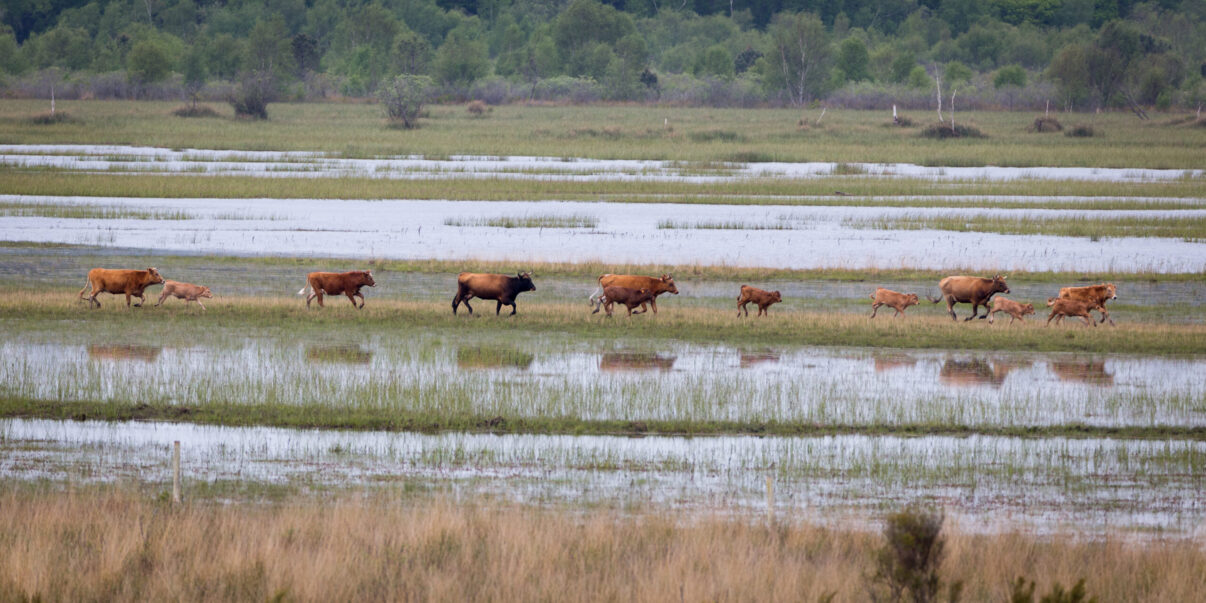
A history of change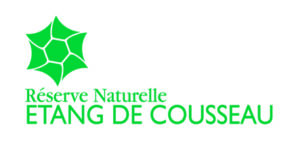
For centuries, the flat lands lining the coast to the west of Bordeaux were sparsely inhabited and wild. Known as the Landes de Gascogne – or the Moors of Gascony – the area was made up of shifting sand dunes set amidst a patchwork of wet woodland, open moorland and boggy marsh. Local people used stilts to navigate the watery landscape and practised traditional pastoralism.
Then, beginning in the 18th century, major drainage works were followed by the extensive planting of maritime pines (also known as cluster pines) and the landscape of sand dunes and marshy moorland gave way to sprawling pine plantations. Following the establishment of this vast plantation, the natural grazing by feral bovines that had once contributed to the character of this landscape of dunes, moors and marshes fell into decline. With the widespread disappearance of these feral herds, a large part of the area’s biodiversity was also lost.
‘Cousseau, dunes and wetlands’ aims to establish a model of successful rewilding for this area by bringing back natural grazing, using feral bovines of a local breed known as the Marine landaise, similar in appearance to traditional breeds such as the Monchina and Aubrac.
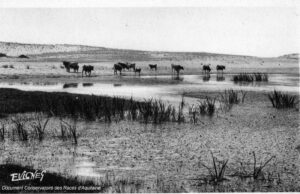
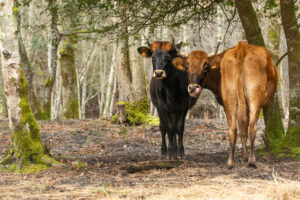
Rewilding field laboratory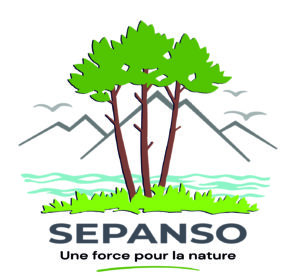
The actions are led by the Society for the Study, Protection and Development of Nature (SEPANSO), a collection of NGOs dedicated to environmental protection in the southwest of France. SEPANSO manages the nature reserve ‘Etang de Cousseau’, which lies at the centre of the rewilding area and thus forms a key part of their efforts.
The nature reserve was created in 1976 and owes its name to a small pond located between the two larger water bodies of the area, Lac d’Hourtin to the north and Etang de Lacanau to the south. Etang de Cousseau now covers 900 hectares, lying just 3 km inland from the Atlantic Ocean, and protects ancient dunes alongside the Talaris marsh, a vast wetland lying between the two larger lakes.
The goal is to establish the Etang de Cousseau nature reserve as a field laboratory, aiming to export its management methods to larger parts of the Landes de Gascogne coastline. Already 600 hectares of wetlands are reconnected to its watershed. In addition, fish passages have been established to connect the inland waterways with the ocean and larger ponds of the Médoc.
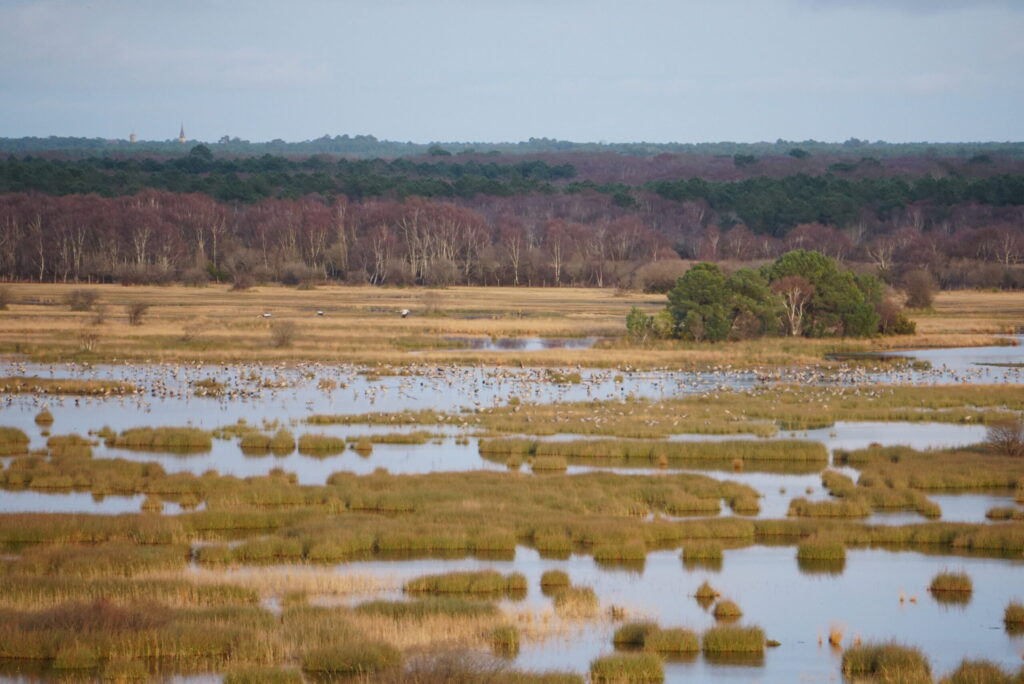
Reintroductions and rewilding
Most recently, the Etang de Cousseau nature reserve has received a grant from the European Wildlife Comeback Fund to reintroduce dung beetles, Scarabaeus laticollis, at two sites where the species became locally extinct in the 1960s.
Dung beetles are still declining in many places – largely due to habitat loss, the widespread use of insecticides, and the growing threat of climate change. By feeding on the faeces of other animals, dung beetles play a critical role in the recycling of organic matter, and their return to the Landes de Gascogne alongside the reintroduction of large grazers will help re-establish this vital natural process, securing the future of the dung beetles and their role in the ecosystem.
Now, François Sargos, SEPANSO’s conservation manager at the Etang de Cousseau Nature Reserve, sees his organisation’s adoption within the European Rewilding Network as recognition for all the work they have carried out. He is excited by the “magnificent synergy and exchange of ideas and skills” that the network makes possible between different European sites and believes that membership will encourage the project to “imagine going further and achieving even more for nature!”
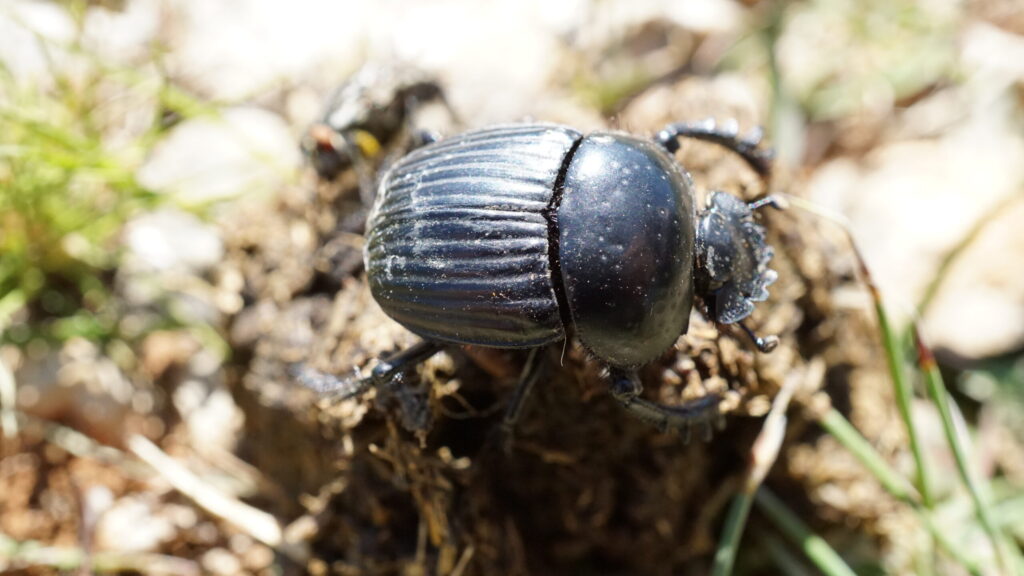
A platform for exchange
Today rewilding is gaining momentum as a progressive and effective approach to conservation in Europe. Underpinning this trend, the burgeoning European Rewilding Network continues to foster collaboration and amplify results.
Founded by Rewilding Europe in 2013, the aim of the network is to enhance the efforts of each member by facilitating the exchange of skills, insight and experience. Members meet regularly, usually via webinar, while nature-based businesses can also apply to Rewilding Europe Capital, Rewilding Europe’s enterprise loan facility.
Rewilding Europe extends a warm welcome to all European rewilding initiatives that focus on practical, result-oriented rewilding and encourages them to apply for ERN membership.
